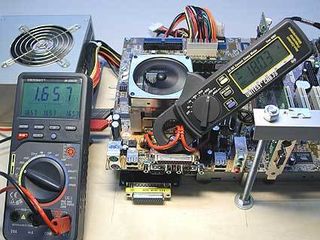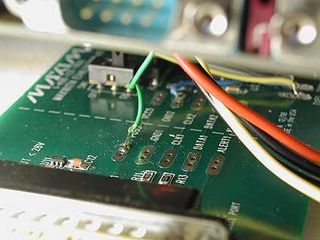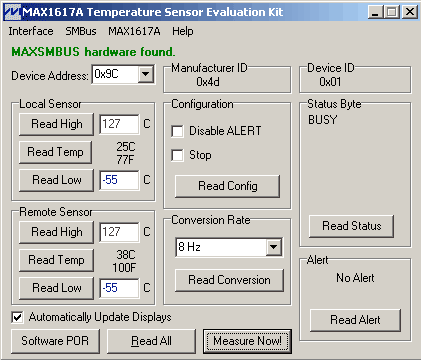A Comparison of 34 Coolers for the AMD Athlon XP
Measure Like The Professionals: Measuring Temperature At The Die
In the last cooler test, we ascertained the temperature data with the aid of the computer-regulated CPU simulator KT-2. With the KT-2, an aluminum block shaped like the die is heated with the aid of a power resistance. The thermal sensor of the KT-2 is located just below the surface on the inside of the block. This enables a highly accurate, reproducible temperature measurement. Despite this, taking measurements using a simulator has a few drawbacks:
- the shape and size of the heating surface do not correspond exactly to the die area of a real CPU;
- the temperature distribution of a real CPU surface cannot be simulated;
- the output does not correspond to the values of a real CPU.
During the course of this test, we used the same kind of measurement platform used by AMD in their cooler tests for the very first time. The details relating to the methodology applied can be read in the document Methodologies for Measuring Temperature on AMD Athlon and AMD Duron Processors .
The measuring platform consists of a modified A7V333 motherboard from Asus and a temperature sensor evaluation kit developed by Maxim. The board was modified in such a way as to enable the measurement of both voltage and current on the processor during operation.

The new measurement platform enables the precise measurement of both the power dissipation and the DIE temperature.

The temperature evaluation sensor kit is located beneath the motherboard.
This makes it possible to take precise measurements of the power dissipation during operation. It simply results from the product of the current drawn multiplied by the drop in voltage on the processor. In addition, using the temperature sensor evaluation kit, the exact die temperature is read out and displayed on the controlling PC.

The user interface of the temperature sensor kit.
Stay on the Cutting Edge
Join the experts who read Tom's Hardware for the inside track on enthusiast PC tech news — and have for over 25 years. We'll send breaking news and in-depth reviews of CPUs, GPUs, AI, maker hardware and more straight to your inbox.
We used an additional temperature sensor at a distance of about one inch above the ventilator fan in order to determine the ambient temperature. The processor (AMD Athlon-XP-2400+) is then heated with the aid of a DOS program that guarantees a constant processor utilization of one hundred percent. Instead of thermal pads, we used Arctic Alumina thermal paste in all of our tests.
Current page: Measure Like The Professionals: Measuring Temperature At The Die
Prev Page Thermal Interface: Pad Or Paste Next Page The Coolers In DepthMost Popular

